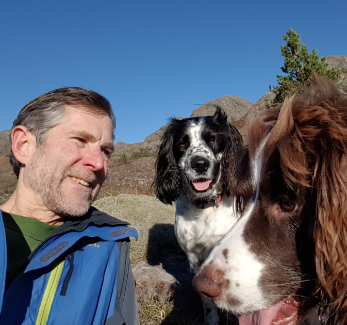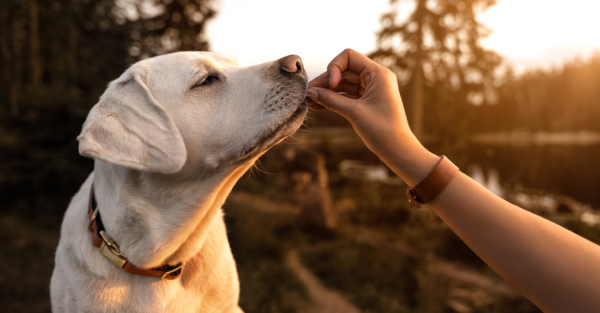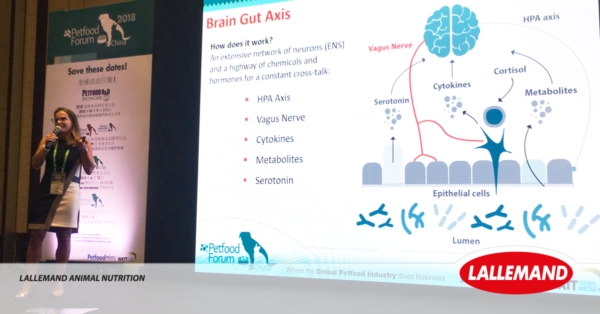Blog | Reading Time 9 minutes
Expert interview: The Development of PetWAG, a dog mood state assessment tool
Dr. Robert Falconer-Taylor, Veterinary Director and Head of Education at Pet CPD in the UK
Robert delivers education to the veterinary profession on clinical nutrition, behavioural medicine and pharmacology. He is also involved in the development of ‘The Puppy Plan,’ a collaboration effort between Dogs Trust and the Kennel Club in the UK. Dr. Falconer-Taylor is a member of the International Cat Care Behavioural Advisory Panel. Wherever and whenever, he can, Dr. Falconer-Taylor promotes the idea that “The key to better animal welfare is through education and better understanding of the rich emotional lives our pets share with us.“
In your practice as a behaviourist, what are the main problems you encounter?
Anxiety and fear. Some dogs are unable to cope with the stresses and strains of modern life. Like all intelligent animals, dogs don’t cope well with prolonged uncertainty and lack of predictability. This leads to anxiety, which can then lead to behaviour problems. For example, dogs may hide themselves, refuse to go for walks, pick fights with other dogs, growl at unknown humans etc. If left unresolved, this kind of conflict can escalate into more over aggression such as biting and so on. But all the changes in behaviour may be underpinned by anxiety and insecurity.
How important is the role of pet parents in these behaviour problems?
With the best intentions in the world, pet owners will go to puppy classes, dog training classes and so on. Often, their expectations are too high for for how quickly their dogs are able to build emotional resilience. A particularly important point is that, if owners don’t get all the groundwork done within the first 16 to 22 weeks of age, it’s 10 times more difficult to get dogs used to lots of different environments and stresses when they get older. You want to introduce as much change as possible between 8 weeks and 16 or 22 weeks because the puppies are more resilient. Their fear system isn’t so well established, and they can cope more with changes. Once they’ve reached about 22 weeks old, it’s kind of too late.
Another important factor is genetic. Some pure breeds dogs are less resilient than others. This is because the breeds have been selected by humans for their looks rather than their resilience to cope in a human world. This can be a problem. Like any genetic experiment, you can get unusual things suddenly appearing, like unwanted behaviour. We’re seeing a lot of designer dogs now.
What is the difference between mood state and emotional states?
Emotional states change all the time. We all have good and bad parts of our day. We can feel good, then something happens, and we feel bad. Mood state is the summation of all our emotional states over a period of time. For example, if you’re always upset and worried at work, this may spill over into the rest of your life away from work. You may be chronically anxious and your emotional states over time will be more negative than positive. Therefore, your mood state will be poor. It’s biological. It’s an adaptive Darwinian trait. It is telling you that you’re in an environment that is not good for you, and it gives you a pessimistic outlook on life. You assume bad things are going to happen, and ultimately that helps protect you from harm if you are living in a dangerous environment like a war zone. But this is maladaptive in a relative safe environment like Western Europe!
It is the same for animals, and this has been tested and demonstrated in many species of animals. If you present an animal with a novel object that they have never seen before, you can observe how they react to it. If their mood state is good, they will be inquisitive and curious and therefore more likely to go and explore the object. If their general mood state is poor, they would be more likely to avoid the object. This is now used in farm animals to test their welfare. In short, we evaluate how they react to something that is benign, neutral but novel. If they’re interested and curious, that means their welfare is fairly good; if they’re not interested, and they back away, that means their welfare is bad. So mood states don’t lie!
How can we objectively assess mood state in pets?
As a behaviourist, I consider an animal’s body language as a window into their emotions and mood states. Another important element to consider is the animal’s personality. Based on these two elements we designed the Lallemand Pet Well-being Assessment Guide, or PetWAG. The tool is now available for dogs and we will also be designing similar tools for cats and horses. The PetWAG tool is designed to be simple enough to use by pet owners without having to have knowledge of psychology or dog behaviour.
Using the PetWAG tool, we first assess our dogs’ personality type because we know from a great deal of empirical research how different personality types influence behaviour. Other factors play a role as well, such as early-life experiences as discussed above. For the PetWAG tool, we had to find something that was easy to assess. In dogs, there are eight or nine personality types, but we broke these down into only four types:
- Confident
- Social
- Shy
- Not social.
These personalities really determine the way dogs will adapt to change and cope with stress. Once the owner has determined which of these four personality types matches their dog, they can progress to the next. Step 2 of PetWAG is an assessment of the dog’s body language. They select the body language they see at three different times across the day, every day, for four consecutive weeks. Then, based on the scoring system, users can assess the dog’s overall mood state. The PetWAG tool allows us to identify clearly positive and clearly negative emotional states, as well as ambiguous body language which could be either positive or negative. Clearly positive emotional states are scored as +1, while clearly negative emotional states are scored as -1. Ambiguous emotional states are scored as 0, which is neutral. After using the tool over several days, weeks and months, the animal’s overall mood state starts to emerge from the data!
I tested the tool with many pet owners living in my village and was very pleased to see how reliable and accurate it appeared to be. As human beings, we humans tend to over-estimate how happy we believe our dogs are. This is quite natural because we want the best for them. In my experiments, the PetWAG clearly demonstrated this phenomenon. Some owners were surprised that the PetWAG tool was telling them that their dog was less happy than they thought! Of course, they took notice of this new information, took action to address the problem and the result was happier dogs!
Why is it important to have a tool to be able to quantify mood state?
The biggest challenge is to give something to the pet parents that is easy to use, easy to understand and as objective as possible. That’s why we developed the PetWAG. It is all very well to say “just look at your dog’s emotional states over a period of time and put it on a chart”. But it’s an awful lot of work for an owner to do. They forget what happened yesterday, their own mood state will bias their assessment of whether their dog was happy or not. As discussed earlier, they’ll probably overestimate their dog’s happiness because they don’t want to see their dog as being unhappy. It was a challenge to take something that is quite complex and time consuming for an owner to do and condense it into something really simple but accurate to objectively assess the mood state. That’s why it took us two years to develop this tool.
How can pet owners help improve a poor mood sate?
The whole point of the PetWAG tool is to catch a mood state that is gradually deteriorating. Animals are very reflective, they’re like mirrors of what’s going on in our own lives. As our lives change, we face challenges, and our behaviour can affect our dogs emotionally too. The goal of the tool is to assess as simply and objectively as possible slight changes in mood. Then, be able to react before the onset of behavioural troubles that may require treatment. Should they be required, advice can be given by a veterinarian or pet on the specific mix of training exercises and nutritional support that may benefit a dog.
Could we adapt the PetWAG to cats too?
We probably could. We could have more or less the same kind of scoring but with far less body language for cats than for dogs. For instance, we have defined four personality types for the dog PetWAG, I believe we could go with four types in cats too. We’ll see! The best way to assess a cat’s emotional state is to look at the face. This is what I’ve done with horses, it’s much more about reading face and reading ears than the whole body. They don’t give much away. So it would be a different tool. We’d have to redesign it, and we could do it for horses too.
Published Nov 27, 2023 | Updated Feb 20, 2024
Related articles
Need specific information?
Talk to an expert



